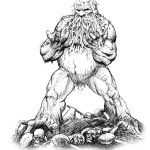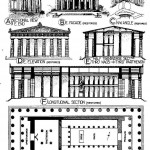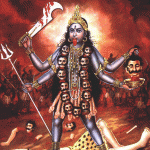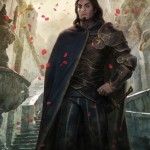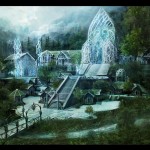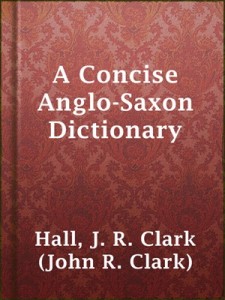
For those unfamiliar I have a long history with pen and paper games. I consider it an art form which can be used to realize the scholarship of etymology, mythology, classics and storytelling in an interactive, social and fulfilling way. These things appeal to me at a visceral level. This sort of gaming is a fond remembrance of my childhood, into my young adult years, and something that feels woefully absent from my life. Hanging out with a bunch of friends and weaving a tale is an ancient practice , but one which has no substitute as far as I’m concerned. It follows then that when I returned for a short vacation to my ancestral New York, where my old gaming friends reside, that I would try to put together a game for old time’s sake.
Notes for the game can be downloaded from the bottom.
This post turned out to be way, way longer than what I had planned in my head. I haven’t written here in awhile and got a bit carried away. Back to the action:
It turns out that my friends Ryan and Dylan already had a 3.5 edition D&D game going in the city (NYC). It included their significant others (a wife and a girlfriend) and two Dans, one of which I knew from high school but never gamed with. Everyone besides Ryan and Dyl were complete noobies, having recently finished their first adventure, the Sunless Citadel. The latter is a mainstay in the D&D world, and is considered a more or less ubiquitous introduction to D&D. It’s a premade “dungeon crawl”, an adventure essentially involving a modicum of story and a lot of combat, made to be easily executed and digested.
Not my cup of tea. Not one bit. I like deep mythological concepts, roleplaying, creative play and epic narrative. When I used to design games I would spend agonizing hours obsessing over the literary origins of names and coming up with unique storylines inspired by our collective mythological past. While it’s an established law of the trade that for every two hours of planning you will have one hour of play I would often use a majority of my time thinking of the extra details in order to establish verisimilitude. Sometimes this can get you in trouble and you can exceed your time budget – but that’s OK if your players have a potent experience after all.
For the Citadel Ryan was DMing. Afterwards he wanted to switch roles with Dylan, who would DM the next “linked” adventure in series – the Forge of Fury. The Forge is a simple dungeon crawl involving looting a fallen Dwarvish city (Khundrukar) which is occupied by Orcs and some other baddies. The purpose of the adventure? The preceding text to the main body of the text suggests that the players could be convinced to go there to get special weapons forged by the long dead Dwarf smith Durgeddin.
So we have a situation in which the players are going from one premade adventure to another. The game I would run was intended to bridge these two adventures in a logical way. Along the way I also took a featureless world and created a basic cosmology, regional history/map and ancient mythology to form as the basis of a more fleshed out and real campaign setting. I also intended to introduce Ryan’s new character and to give Dylan’s character a meaningful sendoff as he would no longer be playing but would now be acting as the next DM. Lastly I wanted to introduce to the new players a different type of gameplay than hack and slash dungeon crawling, insomuch as interaction with ancient history and roleplaying can be just as engaging as waiting for a subsequent turn to inflict damage on a foe.
What follows is a combination of the story behind the game and what unfolded during it.
Before the game starts…
This is revealed to Ryan, playing Fafnir, in a pregame writeup and briefing, who then reveals these details gradually/logically to the party
- In the ancient past the Dwarf father Volund touched the earth and the first Dwarves emerged from the soil. They were savage and uncivilized and lived down in the depths of the earth. They discovered a peaceful, highly enlightened civilization (“early ones”) which taught them how to shape precious metals and wield magic – they became friends. During the height of the opulence the Dwarves grew greedy and enslaved the Early Ones, killing their queen (Kalima) and enslaving their prince (Ashoka).
- Ashoka managed to escape from prison and raised an army of Orcs to get revenge on the Dwarves; he viciously killed most of them. These Dwarves fled their ancestral homeland (Drukarheim) and founded Khundrukar. The leader of the retreat was Durgeddin, a chieftain and legendary smith. During this time as part of the prehistory of the campaign the Dwarf brothers Greco and Fafnir were separated during an ambush by Orcs. Greco was Dylan’s character from the first adventure, Fafnir is a new character to be played by Ryan.
- Fafnir grows up in Khundrukar. After escaping the Orcs the Dwarves create a new city to rival their ancient homeland. They then attack the host of Ashoka for vengeance. The war goes well for the aggressors initially but while most of the Dwarven army is afield the Orcs discover the hidden location of Khundrukar and capture the gates, cutting off those outside. Those in the field are picked apart. Inside the fortress the god Volund inhabits the elder body of the now King Durgeddin so that he might forge war machines, weapons and fortifications of godly sophistication.
- For some time these new creations are almost able to defeat the Orc attack but suddenly Durgeddin is driven seemingly mad by the powers within his mortal body. It’s later discovered during the game that he was actually cursed by Ashoka for the crimes of the Dwarves. This apparent madness results in Durgeddin covering his people in metal and shattering the great works. The fortress falls and Fafnir barely escapes. Fafnir is aided by the Serpent Society, a small band of Dwarf elders from Drukarheim that had tried to stop Durgeddin’s schemes and who then made efforts to uncover and restore their fallen new home (Khundrukar).
- Over time most of the Serpent Society dies off due to old age or the dangers of the world. Fafnir is seemingly the only one left. He travels seeking answers on how to restore his city and now becomes possessed by Volund. Volund communicates that his last power is fading from the world in the madness of Durgeddin and that if he is not freed soon he will die forever. Volund can only be heard in deep caverns and sacred shrines. This is Fafnir’s new, desperate task.
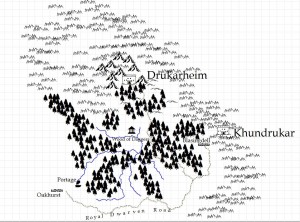
The game starts…
- Fafnir meets the player party at the tavern they last let off at within the quaint little village of Oakhurst. Fafnir reunites with his brother who he has not seen in decades. During the meeting Fafnir is possessed by Volund, rises into the air and empties the tavern. Volund’s magic reveals a map of the region and of their task on a seemingly blank Dwarvish scroll the party uncovered and carried from the past adventure in the Sunless Citadel. It’s implied by a cryptic message that the party must go into The Wood Daggers, an extremely dangerous forest crisscrossed by dozens of rivers that was once a thriving junction of the Elvish, Dwarvish and Human peoples but is now a lawless place inhabited by bands of warlike centaurs, wild animals and much darker things. In the Wood there sits the High Temple of the Dwarves, and there lies the secret to release Volund back into the cosmos.
- The party consults a Gnomish explorer and priest (Erky Timbers) in town about the best way to enter the Wood. He recommends the river but insists it is a suicide mission. He also speaks of the shades of the Dwarvish dead killing the living if they enter too deeply.
- The party decides to take the rivers to the Temple. In doing so they find the portage and river landing occupied by a tribe of a few dozen Centaurs who style themselves after royalty and claim ownership of the whole forest. The party begrudgingly pays to rent a ship and a crew to go upstream after an intense meeting with the Centaur “King” as the weather worsens into a storm.
- The weather brings a continuous rain and banks of mist. The river edge becomes obscured and the ship runs aground, sending some men overboard. The ship is cracked and begins to flood. The party scrambles into the forest to find planks to repair the ship and find an old trade road leading to a derelict depot. The depot’s boards are protected by Elvish spells and have not been weathered by the elements, they make ideal materials to repair the ship. After recovering the boards another group of Centaurs attack, and they are much more ruthless. A frenzied melee and ambush unfolds, several members of the crew are killed and party members wounded. Hope seems lost as the centaurs converge.
- During the ambush wispy, black shadow forms of Dwarves come from deep in the forest and attack. These shades instantly drain the life from those they touch, and the ground they walk on. They rout the Centaurs then attack the party, who are still scrambling to make it back to the ship. Only Fafnir’s sword, a magical blade forged in Khundrukar, seems to wound the ghosts. The party manages to get back on the ship with the boards, conduct hasty repairs and continue down the river.
- Dan and Danielle’s characters (a half-elf druid and elf ranger respectively) recall that in the Ancient folklore of the elves and of their arts these sort of monsters can be warded off by the dust of a sacred Holly-like plant which grows in the shadow of Forest Heart, a massive root at the center of the forest which is fabled to give it life.
- The party enters the forest (off the ship) and travels to Forest Heart, finds it guarded by monstrous but peaceful Forest Giants and freely take some of the holy plant, grinding it into powder and coating themselves and their ship in it.
- They continue north along the river and find the temple. The temple has signs of battle, desecration and the ghosts of the dead reenact the sacking of it;Â Dwarvish temple guardians and robed priests viciously murdered by Orcs and the magics of Ashoka. The ghosts cannot see those covered in dust, but there are undead which can, and attack the party, attempting to consume them. In the Temple gardens they find the mausoleum of the first Dwarvish king, Clovis. They break into his mausoleum, which is in pristine condition, as they sense an incredible evil emanating from it. The party decides to light the sarcophagus on fire, awaking Clovis in the form of a death knight. It’s assumed that Clovis kills the entire party due to the blatant mistake/error of the newbie party. Reset button and no redo on Clovis!
- They then locate the High Temple. On the walls is the story of the ancient history in frieze and painting. The party then learns the history of the Dwarvish crimes for the first time but must escape as the hundreds of Dwarvish ghosts in the temple awaken after the remains of the Dwarf high priests in the citadel are disturbed. The ghosts can now see them. As they flee a ghostly image of Ashoka entering the temple, attempting to use the inner altar to resurrect his fallen queen from the dead and then marching toward the mountain where Drukarheim rests is seen. As the apparition vanishes the still smoldering silhouette of the great Dwarf city can be seen distantly in the mountains.
- At this point I ran out of time planning, everything which follows was done on the fly or was informed by some brief notes I wrote while riding the train into the city or while setting up.
- The party ventures into the mountains to locate the body of Kalima (Ashoka’s wife) and hopefully restore her somehow. Along the way they pass the desecrated gate leading toward the city and rise up a winding steep path cut into the side of the mountain. A two headed giant (Ettin) attacks, crushing the path in front of them with a giant boulder and jumping down to cut off their exit. He wields a pack of a dozen wolves on a complex leash. He demands they surrender and the party refuses, resulting in a terrible, bloody battle. Our heroes ultimately succeed.
- The party comes upon the ruins of Drukarheim and find the fortress destroyed and still slowly smoldering. Atop of it is a beautiful funeral monument in the shape of a lotus with Kalima laying atop it in state. She appears to be in perfect condition even though hundreds of years have passed since her death. She’s looked over by Ashoka, who after some time wanders off into the mountain. The party evades the magics protecting the monument but alert Ashoka of their presence when a magical bell reverberates through the mountains. As they approach Kalima in state she disintegrates into a wispy form and all that remains behind is an ancient skull. Greco grabs the skull and flees before Ashoka can return but the mountains are thundering and cracking with lightning, creating a landslide.
- The players make it back to the boat and sail south toward Forest Heart again. It’s decided that the Elves, long fabled to have gone into hiding since the end of the war and unseen by any, if found, might be able to heal Kalima. Greco and Garth recall their first home after the fall of Drukarheim in the forest, and recall their elders traveling north to meet Elves. If only they could find their old town, they might be able to find the Elves. Daniele, an expert tracker, helps discover the ruins of the long abandoned town but find it occupied by a war party of Orcs led by a spell wielding Ogre. The party observes by awhile as the war party sets up camp in the town, posting sentries. Suddenly an Elvish detachment led by the knight captain Durathor ambushes those in the town and quickly dispatches them.
- The party meet the elves, who agree to bring them to the court of the Elvish king Aurvandil. The Elvish kingdom is revealed to have been cloaked by an immensely powerful spell of invisibility, brought down upon it by the Elvish high wizards. A lift leading up into the trees suddenly comes into sight and all the Elves and party rise into the canopy of an impenetrable thicket of mighty trees, soon glimpsing the thriving but carefully hidden Elvish city of Andoeryn.
- Greco leads the party to meet before the powerful Elf king and begs for aid. Aurvandil is initially hesitant, blaming the Dwarves for causing such chaos and forcing his people to hide for their survival, but upon seeing their remorse finally relents. He orders the High Druid Correlon of the Elves to restore Kalima but the former sadly states that she is beyond healing in her decrepitude, that the only hope might be to submerge the skull in the spring of Forest Heart, a pool which is said to give life to the root itself.
- The party is escorted to the pool at the base of Forest Heart (which the party could not see on their first visit, as it is on the other side, the side in light) by Durathor, his warriors and the druids. The skull is thrown into the waters by Greco but nothing happens. Correlon then says that only a “life for life” could bring back the dead. After a tense moment of delay Greco embraces Fafnir and then slips into the pool, vanishing below the waters. Kalima reborn rises from the pool and telepathically explains that Durgeddin did not go mad but was cursed by her enraged husband and prince, and that the only way to release Volund and finally settle things will be for her to be escorted to Khundrukar so that she might lift the curse.
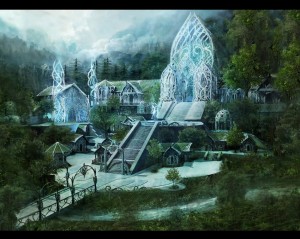
After the game…
The game lasted for about 9 hours and was arguably one of my finest pieces of work. Afterwards I recommended that Dylan connect his adventure to my own by simply having the party take one of the Dwarvish royal roads in the forest to Khundrukar and then unfolding the natural outcome of the story arc. Now the players have a much richer world to explore, contemplate and interact with. At least I hope so.
Notes for the game:
